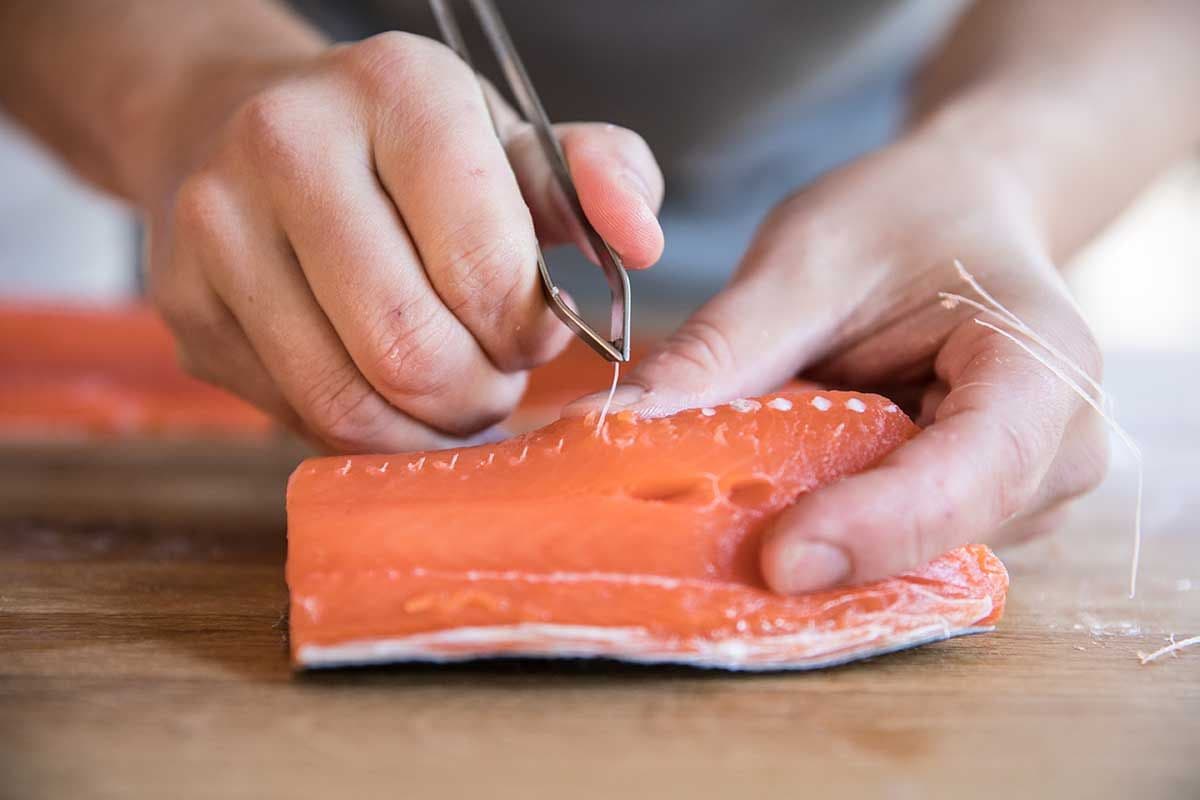What are pin bones and why don't we remove them?
Have you ever wondered how salmon swim so close together in their streams? They can do so because they have nerve endings all along their side, which help them sense salmon swimming next to them. We call them the pin bones and they are unique to salmonids.
Pin bones aren't removed through filleting. Typically, large Alaskan processors remove them with a machine called a (you guessed it) pin bone machine. In order to remove pin bones mechanically the salmon have to “rest” for a few days so their flesh can soften. “Resting,” however, is really an industry euphemism for rotting. The process sacrifices enough quality that we’re uncomfortable doing it.
Below we've included a 30-second video and pictorial guide on how you can easily remove the pin bones. Note that tail cuts have fewer pin bones, and will gravitate towards the wider end of the fillet. If removing your pin bones seems like too much of a chore, simply push them to the side while you eat. Enjoy!
1. Arrange the salmon fillet with skin-side down.

2. Gently feel the surface of the meat to find the ends of the pin bones.

3. With a pair of kitchen or pin bone tweezers, take a firm grasp of the pin bone and pull in the direction it’s pointing.

4. Continue along the salmon until all pin bones are removed.

Ready to cook? check out our delicious seafood recipesfor some culinary inspiration!


